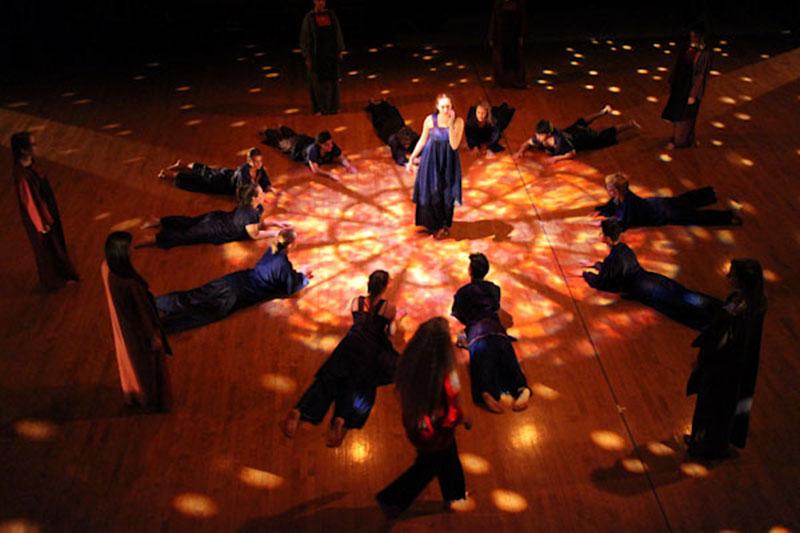‘Spring Back’ Revitalizes Postmodern Dance
College sophomore Alana Reibstein performs a piece choreographed by Ann Cooper Albright, the chair of the Dance department, for Spring Back. The show is a combination of student-produced work as well as pieces choreographed under the direction of Albright.
April 11, 2014
“Sometimes [Warner Main Space] feels like a big cathedral; other times I’ll lie on my back on the floor and look up into the rafters and it’s like we’re all in a big upside-down ark,” said College junior and Dance major Silvia Sheffield. The performance space has seen generations of dancers, and the latest aims to honor the venue and its history. This season’s Spring Back show, Oberlin’s annual spring dance concert, is centered on the exploration of the human form and how it relates to location. The show is a combination of student-produced work as well as pieces produced under the direction of Professor of Dance and Department Chair Ann Cooper Albright. It premiered on Thursday, April 10 at 8 p.m. and will run through Saturday, April 12.
Though Spring Back has no overall theme, each work hearkens back to the history of Warner Main Space. The large variety of work will be presented in the round; instead of a makeshift black-box performance space with a stage and one section of seating, this year’s space will have four sections of seating that surround the dancers as they perform. The arrangement will amplify the intimacy between the performers and audience members and Albright hopes that the innovation will allow viewers to further engage with the ideas and motions of the dancers. “Having Spring Back in the round will hopefully allow the audience to feel the expansiveness of the space, which makes it feel special,” Sheffield said.
The concept behind the installation provides another way of understanding the playful yet solemn nature of the collaborative performance of Spring Back. Albright noted that there has not been a show presented in the round in the past decade. The inspiration for this method of presentation came from an experimental dance show/residency that was staged at Oberlin in 1972 by a performing arts collective called Grand Union, which similarly performed in the round.
Grand Union’s performances is derived from methods of contact improvisation, a form of experimental dance that stems from collaborative expressions between the Judson Dance Theater and Merce Cunningham in the 1960s. Grand Union’s Oberlin performance in 1972 consisted of founding member Steve Paxton alongside 11 male students positioned on a wrestling mat, followed by Paxton’s “small dance.” The new show aims to echo these early experimental moments in postmodern dance, and Albright hopes to show images from this performance in Warner Main during Spring Back.
In addition to the dancers, Conservatory performance group Collegium Musicum will play Hildegard Von Bingen’s “Ave Generosa,” and installation art pieces by College junior Julia Sheppard, Conservatory junior Elise Moltz and double-degree sophomore Sage Jenson will flank the seating area. Sheppard explained, “The installation hangs in one corner of Warner Main Space alongside an interactive contact improv score. The audience is encouraged to leave their seats and walk over to the two corner installations. The installation ‘Dreams’ is a piece that explores the sights and sounds that one might imagine in a dream through video, dance, shadow and sound.”
The show aims to incorporate similar concepts of equalizing sensibility through movement. Albright believes that the combination of the intimate space and the show’s improvisational undertones allows for “a unique opportunity to change the dynamics between spectators and performers.”
Tickets can be bought at Central Ticket Service and are $3 in advance and $5 at the door.

























